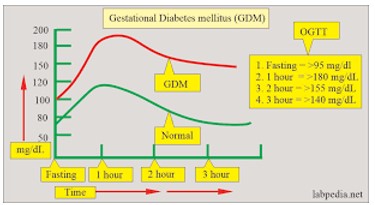A client with diabetes insipidus (DI) has an average urinary output of 500 ml. of dilute urine every hour for the last 4 hours. Which laboratory test is most important for the nurse to monitor?
White blood cell count.
Capillary glucose.
Urine specific gravity.
Serum sodium.
The Correct Answer is D
A) Incorrect- This test is used to assess for infection or inflammation and is not specifically related to monitoring diabetes insipidus.
B) Incorrect- This test is used to monitor blood sugar levels in individuals with diabetes mellitus, not diabetes insipidus.
C) Incorrect- While urine specific gravity can provide information about urine concentration, it is not the most important laboratory test to monitor in a client with diabetes insipidus. Serum sodium level is a more critical indicator of electrolyte balance and potential complications in DI.
D) Correct- Diabetes insipidus (DI) is a condition characterized by excessive thirst and urination due to the body's inability to regulate fluid balance. In DI, the body either lacks antidiuretic hormone (ADH), which regulates water reabsorption in the kidneys, or the kidneys are resistant to its effects. As a result, clients with DI can produce large volumes of dilute urine. The most significant concern in DI is the potential for electrolyte imbalances, particularly low serum sodium levels (hyponatremia). Excessive loss of water in the urine can lead to dehydration and concentration of the blood's sodium levels. This can result in neurological symptoms, such as confusion, seizures, and even coma. Monitoring the serum sodium level is crucial to ensure that it remains within a safe range.
Nursing Test Bank
Naxlex Comprehensive Predictor Exams
Related Questions
Correct Answer is A
Explanation
A.Tingling on the tongue or lips is an early sign of an allergic reaction to the contrast dye used during an intravenous pyelogram. This type of reaction can quickly progress to more severe symptoms, such as difficulty breathing and anaphylaxis, so it is crucial to recognize and respond to it promptly.
B. Episodes of shivering: Shivering is not typically an early sign of an allergic reaction to contrast dye. It might indicate a reaction to temperature or anxiety but is not as immediately concerning as symptoms of an allergic reaction.
C. Salty taste in the mouth: A salty or metallic taste is a common and benign side effect of the contrast dye and is not indicative of an adverse reaction.
D. Difficulty breathing: Difficulty breathing is a severe and later sign of an allergic reaction. By the time this symptom appears, the reaction has progressed and immediate intervention is necessary.
Correct Answer is ["A","B","C"]
Explanation
Her fasting 1-hour glucose screening level, which was done 1 week prior, is 164 mg/dl. (9.1 mmol/L) Her 3-hour oral glucose tolerance test results reveal a fasting blood sugar of 168 (9.3 mmol/L) and a two-hour postprandial of 220 mg/dL (12.2 mmol/L).
The client has gestational diabetes mellitus (GDM), which is a condition that affects some pregnant women and causes high blood sugar levels. This is bad during pregnancy because it can increase the risk of complications for both the mother and the baby, such as preeclampsia, macrosomia, birth trauma, neonatal hypoglycemia, and congenital anomalies. The client needs to follow a diet and exercise plan to control her blood sugar levels and prevent further complications. She may also need to take insulin injections or oral medications if diet and exercise are not enough. The client should monitor her blood sugar levels regularly and report any abnormal results to her health care provider. The client should also have regular prenatal visits and ultrasounds to check the growth and development of the baby.

Whether you are a student looking to ace your exams or a practicing nurse seeking to enhance your expertise , our nursing education contents will empower you with the confidence and competence to make a difference in the lives of patients and become a respected leader in the healthcare field.
Visit Naxlex, invest in your future and unlock endless possibilities with our unparalleled nursing education contents today
Report Wrong Answer on the Current Question
Do you disagree with the answer? If yes, what is your expected answer? Explain.
Kindly be descriptive with the issue you are facing.
